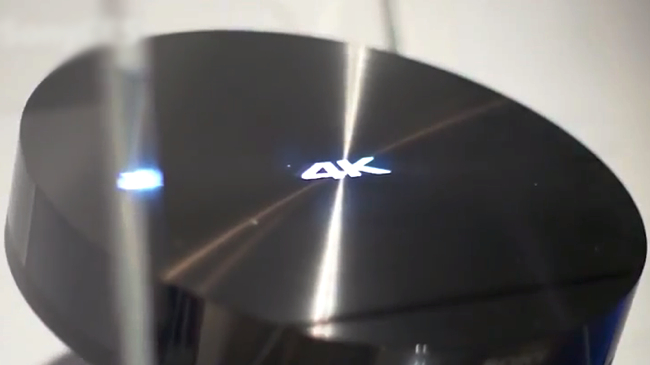
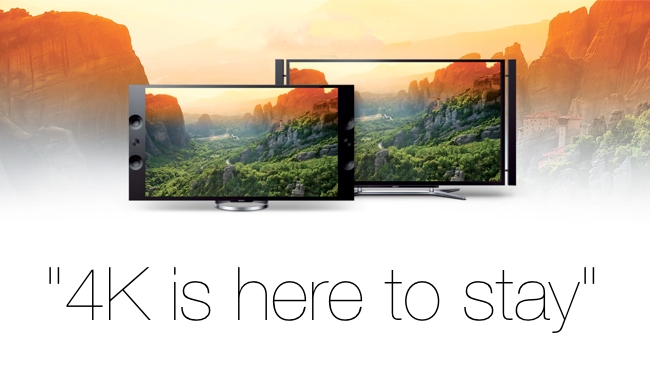 4K is here to stay
4K is here to stay
RedShark Editor Dave Shapton presents the still controversial view that 4K is already a done deal, and that it's not just a marketing ploy but has real advantages for content creators and viewers
One of the advantages of getting older is that you gain a sense of perspective. You remember what things were like decades ago, and with today’s rate of change, that means they were nothing nothing like what we have today.
When I was born, the state of the art in consumer electronics was a valve (“tube”) radiogram. This was a thing that virtually anyone could repair with a basic soldering iron, and it had components that you could not only see, but could grab with your fingers. Today’s electronics have multiple billions of transistors on a single chip that are orders of magnitude too small to see, and run fast enough to either process several thousand tracks of digital audio or compress high definition video into ProRes in real time - while powered by a battery.
So while I’m not quite old enough to remember people saying that “Colour Television won’t catch on” (although that certainly did happen), I do remember people complaining just a decade ago that HD was just a fad, or at least that it was a gimmick to make us all upgrade our TVs.
I’m going to gloss over 3D, which might just be the exception that proves the rule, and go straight to 4K, which, as the next TV “standard”, is now poised to be well and truly established within an even shorter time than even we were predicting - and we’ve always been on the side of “it’s going to happen sooner rather than later”. (Note that although 4K and UHD are, strictly, different, when I say 4K in this article, I mean both 4K and UHD. My justification for this is that both are roughly four times the resolution of HD, with 4K having slightly more horizontal pixels than UHD.)
Let’s come back to the rate of adoption in a minute and assume for now that 4K is going to happen for good reasons. Let’s say that it makes things better for production, post production, and, ultimately, the viewers.
The justification for 4K
There’s a lot to say here, so I’ll keep it brief.
Strictly, logically and scientifically, 4K looks more detailed than lower resolutions. It’s effectively a logical truism that more detailed pictures are better for us. Of course there are downsides, like cost, and increased bandwidth requirements, but let’s keep to the aesthetic justifications for now.
And it is easy to justify 4K.
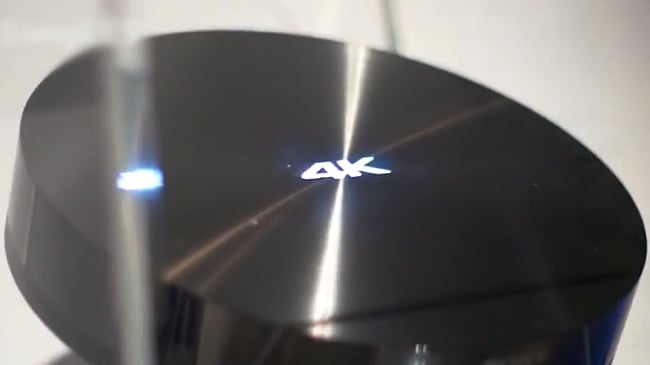
4K for acquisition
For a start, even if you’re not going to distribute your production in 4K, any derivatives of your original 4K material will look better. They’ll look better if you’re downscaling from uncompressed material, and they’ll look better if you compress your content. This is because there’s more information to start with. Compression algorithms can make better decisions because they have more information to base those decisions on.
Think about it like this: if I said to you “you have to make a painting of me, and you can have a choice of a high resolution photo to use as your source, or a detailed Lego model”. Quite obviously, you'd choose the photo and play with the Lego. Here's the crux of the analogy: the Lego model is high definition, and the photo is 4K. You can see why you’d choose 4K as the source every time.
So this shows what there really isn’t much argument about anyway, which is that if nothing else, 4K is better for acquisition. But it isn’t essential - just look at the continued success of the Arri Alexa, which remains, even after this year’s NAB, resolutely sub-4K but with such a great-looking output that no-one that I know has even gone near to criticising it for not having enough resolution.
HD demonstrated to everyone that shooting in a higher resolution than needed for distribution means that pictures at a lower resolution look better as a result, and the same is true for 4K in relation to HD.
There are other benefits of acquiring your material in 4K, even, especially if you’re going to watch in a lower resolution. You can change your camera angle and framing in post.
Sporting advantage
Being able to re-frame your shot in post without losing quality can only be done when you’re coming from a picture with more pixels than the one you’re outputting, but if you do, you can pan and zoom digitally (within the original frame) without any perceived quality loss. The benefits to sports broadcasters are immediate and significant. For decades the slow-mo action replay has been a staple of sports broadcasting. Now, it’s joined by the digital pan and zoom where details that were missed the first time can be revisited, magnified and examined. Even though it’s a very easy technique to understand, it does give sports producers an almost magical ability.
Sony has exploited this even beyond what you can do with a single camera, with their real-time image stitching system, where several locked-off cameras - say three HD or two 4K - are used to cover an entire sports field. Digital processing stitches the images together and corrects their geometry to allow an utterly plausible “virtual” camera to select its view from a detailed choice of the entire pitch.
The technique doesn’t stop there either. As soon as 4K becomes established we’re likely to see 8K cameras doing the same thing but with even more zoomability, or allowing native 4K broadcasters to have the same ability as 4K stitching gave HD broadcasters. And we may ultimately see an entire pitch covered from all angles, allowing a virtual camera to generate absolutely any view, from any angle.
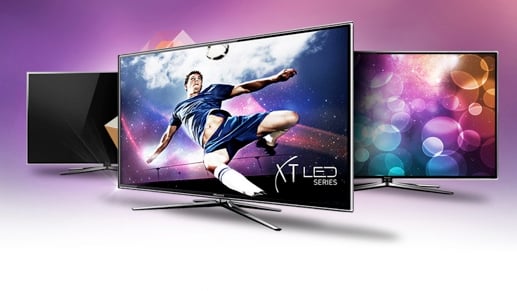
Future proof
For film and TV, moving to 4K acquisition not only makes existing pictures look better and allows native 4K distribution, but will “future proof” productions against looking “soft” had they only been made in HD. You may have heard of the UK production "Dad's Army" which was first shown in 1968, was made in colour, and while it is the quality of the writing and the humour that has kept it on British screens ever since then, it is at least debatable as to whether it could have been shown for so long had it been in black and white. (Although the BBC started broadcasting in colour in 1967 - ten years after the US - many productions continued to be made in black and white for a number of years after that.)
Are there any downsides to acquisition in 4K? Yes. As we’ll see below in Post production, there is more data to move, process and store, but the difficulty of dealing with this will diminish rapidly over time. More serious, and a bigger question for creatives rather than engineers and technicians, is that focus is far more critical. If your production calls for the extreme sharpness and detail that only 4K can provide, then you’d better make sure that your lenses and your focus puller are up to it - or you could find that you have to reshoot some critical scenes when you see your less than pristinely sharp rushes.
For broadcasters, 4K in TV studios is now a reality with Sony’s announcement of the CA-4000: a Studio Back for the 4K F55.
4K for post production
Higher resolutions than HD have probably been around longest in post production and especially in digital processing of images that were first captured on film. The so-called Digital Intermediate, or DI, stages of production relied on high-resolution scanning to preserve the overall quality of the effects and original images for output back to film for cinema distribution. More recently, the images have remained digital so that they can be sent in a digital form to cinemas equipped with digital projectors. Even ten years or more ago, films were being scanned at 2K resolution and higher than that soon afterwards.
Animated films can be created and rendered at virtually any resolution, because, effectively, this is just a parameter to be set at rendering time. Of course, an increase in linear resolution (eg 2K to 4K) means an exponential increase in rendering time: 4K is four times the resolution of 2K - but as long as the original animation models and scenes exist, it’s possible to re-render virtually anything at a higher resolution, or even 3D as we have seen with a number of popular animated films. Note that just because you can re-render a scene it doesn’t mean that you will see, for example, more blades of grass, but it does mean that edges might seem sharper and if the original models were detailed enough, a 4K render will allow the scenes to be viewed with extra subtlety.
For CGI there are advantages gained from working with 4K. Diagonal lines show less aliasing (the jagged edges caused by the “grid” nature of a pixel-based image) and image-based tracking is easier, because there is more detail and hence less ambiguity in the objects being tracked. CGI objects can be made to blend-in with real-world backgrounds better and, all round, CGI will look more convincing (unless, of course, it’s done badly, in which case 4K will merely expose shoddy work - as it does with real scenery, for that matter!).
A true 4K or higher workflow will mean that the extra quality from 4K acquisition will be preserved all through the production chain.
Disadvantages?
There are disadvantages, always, associated with working at higher resolutions, and the biggest one is that there is so much data: again, four times the amount needed for mere HD. It’s probably safe to say, though, that this is a temporary problem that will largely be seen off by Moore’s law. In other words, the prices of the most critical elements of a production chain tend to fall so rapidly that by the time 4K is established, the end to end equipment roster is likely to cost little more, if not less, than the previous, HD generation.
Distribution: delivering and viewing 4K material
I have seen a lot of 4K material on 4K screens now. Enough to know that anyone who says you can’t see a difference probably hasn’t seen any. That doesn’t mean that there aren’t plenty of respected voices in the industry saying that if you watch 4K on the same size screens and at the same distances you watch HD you won’t see any difference. That’s completely true. I sit so far from my 40” Sony Bravia that I can barely notice the difference between HD and SD. But that’s not the point. The point is that whatever the quality of the image you’re watching, and whatever distance you’re watching it from, if you want to have a screen that’s four times the size, you need to have four times the resolution. Every discussion about 4K should start from this position. It’s almost self-evident. Even if you start with standard definition, you need four times that (ie HD in this case) to have the same spacial quality on a screen that’s four times the size.
So, yes, you need bigger screens for 4K. And you need to sit closer. And you might need to get new glasses.
But, that’s not a bad thing. The more of your field of vision a moving image occupies, the more you’re able to suspend reality and become involved in the movie or TV program. So, in a way, the “problem” of 4K goes away at this point. Even if you live in a small house. If you get a bigger screen and have to sit proportionately closer to it than your HD screen, then that’s a good thing and perfect for 4K. Sure, houses are getting smaller, but so is the physical bulk of flatscreens. Future screens will be so thin that you won’t be able to see them sideways. Very few houses are so small that they don’t have 60” of spare wall space somewhere in the living room.
Watching at home
But before anyone watches 4K in the home, it has to get there, to their screen. And, unlike with HD, there’s no 4K optical medium to do this. Most people think that streaming and - intitially, because of the bandwidth required - downloading will be the default delivery method. Sony’s certainly betting on this with their “4K delivery system”. What’s almost certain though (and all the more likely because of the radio silence from the broadcasters on the subject) is that satellite and cable content providers will start an initially limited 4K service, with just a few channels. The numbers will grow proportionately to the demand, which will itself track the number of 4K screens installed in people’s homes.
And don’t forget that Netflix has as-good-as committed to streaming in 4K, and it has already said that it will remaster existing material and create new content in 4K.
HEVC, also known as H.265, is close to adoption now. Close enough that several manufacturers are basing new hardware around the standard, and very recently we learned that the first trial broadcasts in 4K using HEVC have already happened. The trials have taken place at 20Mbit/sec, which is well within the capabilities of the existing satellite infrastructure (the first HD broadcasts used 19Mbit/sec MPEG-2!)
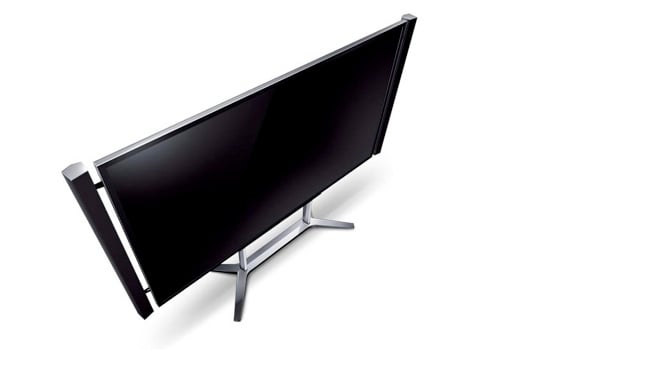
Will it happen?
Answering this is like betting on a race after it’s been run. 4K has happened. Not in the home yet, but in just about everything upstream it’s already an absolute given. If it wasn’t before this year’s NAB, it is afterwards. Here’s why.
First of all, by the end of this year, it is very unlikely that anyone (with the possible exception of ARRI!) will make another professional camera that isn’t capable of at least 4K. In this sense, HD is dead. And it’s happened virtually overnight, except that the Sony F65 first appeared in 2012 and RED have arguably been making 4K cameras much longer than that. Apart perhaps from ENG camera makers, it is now virtually certain that all significant new models will be 4K.
Next, even though Blackmagic’s announcement of their new cameras - one of which was capable of 4K - pretty much stole this year’s NAB, they had another, arguably more significant, announcement. Which was that virtually all of their live production equipment range is now 4K capable. Using the new (soon-to-be) standard of 6G SDI, all of their equipment, from their cameras, their switchers, to their studio recorders, is 4K capable. This revelation is transformative. It means that 4K workflows are real and affordable. Other manufacturers have announced that 4K compatibility is going to be available at virtually no extra cost.
Finally, we’ve seen the price of 4K televisions plummet over the last six months. Before Christmas 2012, Sony released their 84” 4K Bravia, which remains at the top of their range and - we’ve seen it several times now - it is a stunning TV. But at NAB, they revealed smaller TVs at a very much lower cost - easily approaching affordability for early adopters. And finally, before the show was over, a Chinese company burst onto the scene with a 50” 4K set for the same price as a mid-range HD set. According to Gizmodo, who’ve seen it, it’s actually pretty good!
We try to avoid getting too specific with our predictions, but here’s one that we feel confident about.
In less than three years, there will be more 4K televisions in the shops than HD. And in five years, you won’t be able to buy a new large screen HD set at all.
NAB 2013 was probably the tipping point. There’s no going back now. Not like with 3D. 4K is here to stay. It’s not just a fad.
4K is the way that film and video became the same thing.
Tags: Technology


Comments